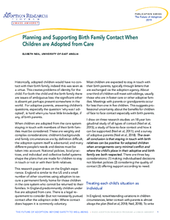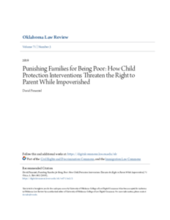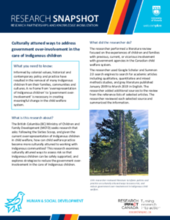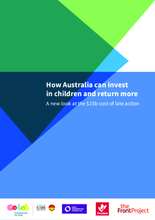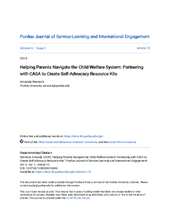Displaying 981 - 990 of 2214
When children are adopted from the care system staying in touch with members of their birth families must be considered.This research paper draws on the English experience.
The Routledge Handbook of Critical Social Work brings together the world’s leading scholars in the field to provide a cutting-edge overview of classic and current research and future trends in the subject.
This article from the Oklahoma Law Review explores the US child welfare system and the practice of family separation of poor families.
Through systematic and strategic searches, the authors explored the existing trends of Family Group Conference (FGC) research in indigenous contexts.
This study aimed to explore the psychometric properties of the BERRI in its current form for use with Looked After Children (LAC) in residential care and to explore whether these properties might be enhanced through the extraction of factors.
This snapshot provides a brief overview of research examining culturally attuned ways to assess risk so that Indigenous children in Australia can be safely supported.
This open access article explores three related phenomena: first, the abandonment and institutionalization of children with disabilities in China that increased disproportionately in the 2000s; second, the important relationships between such abandonments, culture, economics, and politics in contemporary China; and third, the relationship between such abandonments, the increasing rates at which Chinese orphans with disabilities are being adopted to Western countries through Inter-country Adoption (ICA), and the global politics of ICA and disability.
This report highlights more than 70 child welfare agencies across the United States that partnered with the Human Rights Campaign Foundation’s All Children - All Families project to improve the services they provide to the LGBTQ community, including children in foster care and prospective foster and adoptive parents.
The purpose of this report is to: reveal how much Australian governments spend every year because children and young people have reached crisis point and highlight the opportunity of earlier and wiser investment in children to improve the lives of young Australians while reducing pressure on government budgets.
The goal of this paper is to describe a pilot effort to provide empirically sound self-advocacy resource kits to parents in the child welfare system in one Indiana county in the United States, in partnership with the organization that aims to advocate for the best interests of children at the center of these cases—Court Appointed Special Advocates (CASA).

